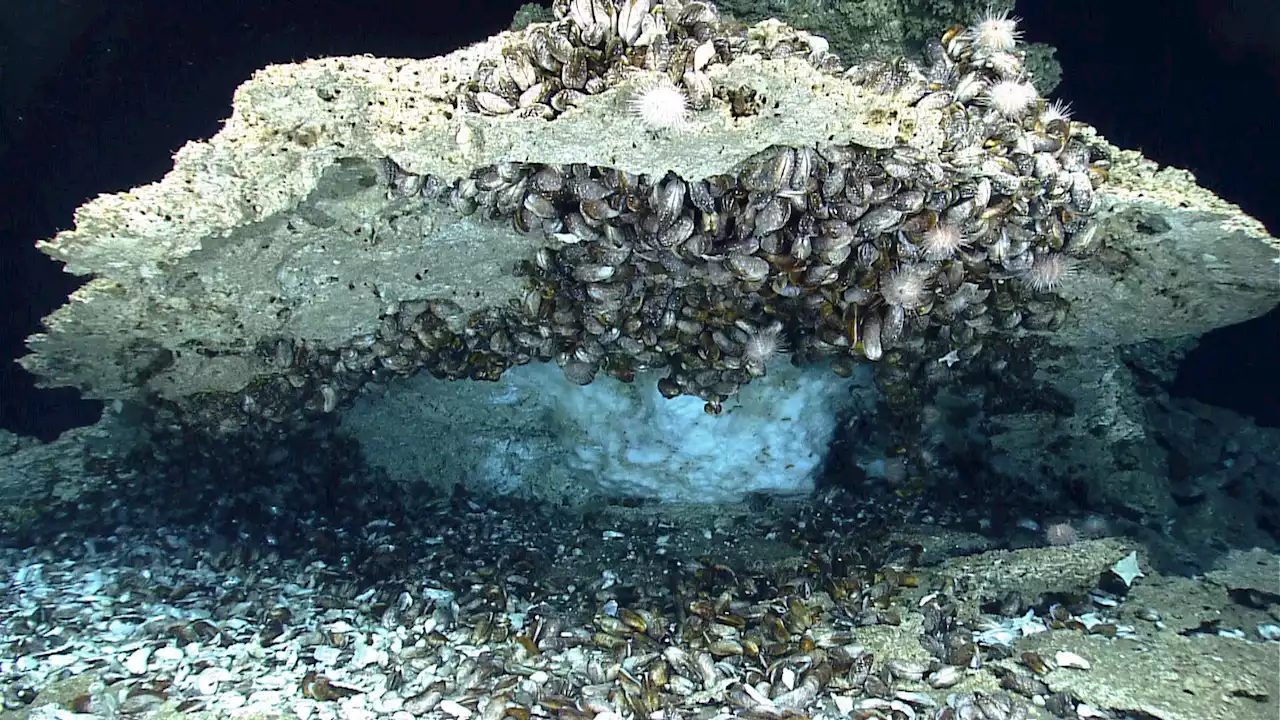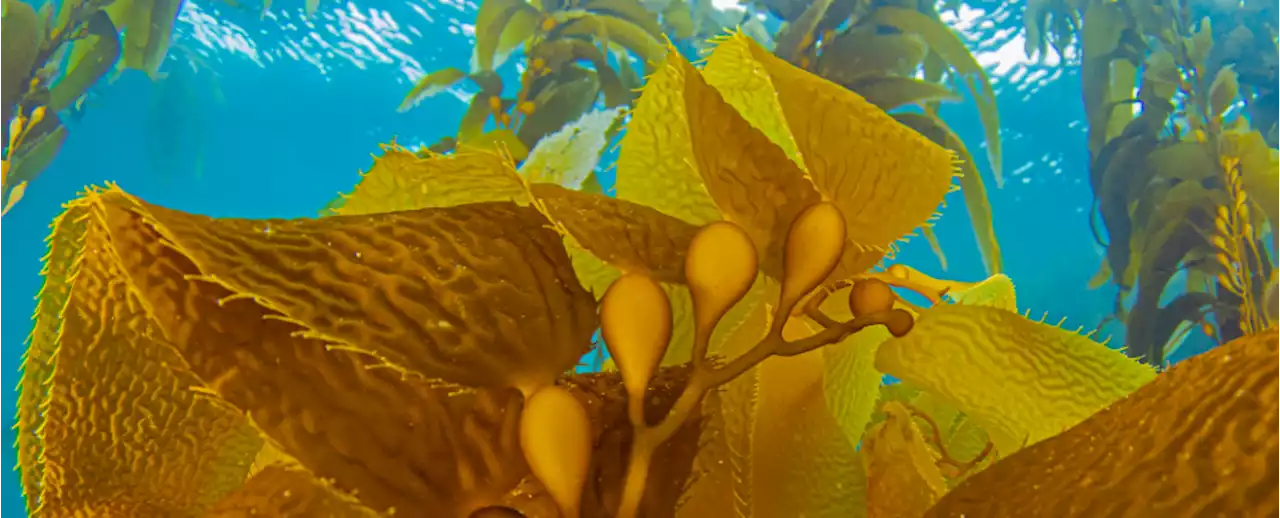Methane clathrates usually develop in high-pressure settings. And are found mostly in frozen polar areas and on the ocean floor.
Methane clathrate under a rock from the seafloor of the northern Gulf of Mexico. Deposits such as these demonstrate that methane and other gases cross the seafloor and enter the ocean.
A recent study has discovered a new class of bacterial proteins that play an essential role in methane clathrates' creation and long-term stability.trapped within an interlocking lattice of water molecules. They serve a key role in preventing methane from entering the atmosphere. “We wanted to understand how these formations were staying stable under the seafloor and precisely what mechanisms were contributing to their stability. This is something no one has done before,” said Jennifer Glass, associate professor at Georgia Tech, in anMethane clathrates usually develop in high-pressure settings. They are found mostly in year-round frozen polar areas and on the ocean floor.
For this study, the team examined a methane deposit extracted from the seafloor off the coast of Oregon.Following that, they prepared proteins that were thought to be prospective candidates for binding to methane clathrates.
United States Latest News, United States Headlines
Similar News:You can also read news stories similar to this one that we have collected from other news sources.
 Ancient plant wax reveals how global warming affects methane in Arctic lakesIn a new study, researchers examined the waxy coatings of leaves preserved as organic molecules within sediment from the early-to-middle Holocene, a period of intense warming that occurred due to slow changes in Earth's orbit 11,700 to 4,200 years ago. They found that warming potentially could lead to a previously under-appreciated flux in methane emissions from lakes.
Ancient plant wax reveals how global warming affects methane in Arctic lakesIn a new study, researchers examined the waxy coatings of leaves preserved as organic molecules within sediment from the early-to-middle Holocene, a period of intense warming that occurred due to slow changes in Earth's orbit 11,700 to 4,200 years ago. They found that warming potentially could lead to a previously under-appreciated flux in methane emissions from lakes.
Read more »
 Novel bacterial proteins from seafloor shine light on climate and astrobiologyResearchers have unveiled a remarkable discovery: the identification of novel bacterial proteins that play a vital role in the formation and stability of methane clathrates, which trap gigatons of greenhouse gas beneath the seafloor. These newfound proteins not only suppress methane clathrate growth as effectively as toxic chemicals used in drilling but also prove to be eco-friendly and scalable. This innovative breakthrough not only promises to enhance environmental safety in natural gas transportation but also sheds light on the potential for similar biomolecules to support life beyond Earth.
Novel bacterial proteins from seafloor shine light on climate and astrobiologyResearchers have unveiled a remarkable discovery: the identification of novel bacterial proteins that play a vital role in the formation and stability of methane clathrates, which trap gigatons of greenhouse gas beneath the seafloor. These newfound proteins not only suppress methane clathrate growth as effectively as toxic chemicals used in drilling but also prove to be eco-friendly and scalable. This innovative breakthrough not only promises to enhance environmental safety in natural gas transportation but also sheds light on the potential for similar biomolecules to support life beyond Earth.
Read more »
Indianapolis Prize Gala recognizes animal conservationistsPablo Borboroglu was this year's winner for his work studying penguins across four continents over the past three decades.
Read more »
 COP 28 President: Over 20 energy companies align around 2050 net-zero goalMore than 20 oil and gas companies have positively answered calls to align around net zero by 2050, zero out methane emissions and eliminate routine flaring by 2030, COP28 president Sultan al-Jaber said on Monday at an energy conference.
COP 28 President: Over 20 energy companies align around 2050 net-zero goalMore than 20 oil and gas companies have positively answered calls to align around net zero by 2050, zero out methane emissions and eliminate routine flaring by 2030, COP28 president Sultan al-Jaber said on Monday at an energy conference.
Read more »
 – Novel Bacterial Proteins From Seafloor Shed New Light on Climate and AstrobiologyGigatons of greenhouse gas are trapped under the seafloor, and that’s a good thing. Along continental coasts, where slopes descend into the ocean, tiny ice cages hold methane gas in place, preventing it from rising and releasing into the atmosphere. Though not often highlighted in media, these fo
– Novel Bacterial Proteins From Seafloor Shed New Light on Climate and AstrobiologyGigatons of greenhouse gas are trapped under the seafloor, and that’s a good thing. Along continental coasts, where slopes descend into the ocean, tiny ice cages hold methane gas in place, preventing it from rising and releasing into the atmosphere. Though not often highlighted in media, these fo
Read more »
 Australian Seaweed Boosts Collagen Levels in Human-Like Skin Cells in The LabIf you believe the headlines, seaweeds can do almost anything from storing tons of carbon and stopping cows from belching methane, to making biofuels and renewable plastics – all while sustaining vibrant coastal ecosystems and feeding communities.
Australian Seaweed Boosts Collagen Levels in Human-Like Skin Cells in The LabIf you believe the headlines, seaweeds can do almost anything from storing tons of carbon and stopping cows from belching methane, to making biofuels and renewable plastics – all while sustaining vibrant coastal ecosystems and feeding communities.
Read more »
